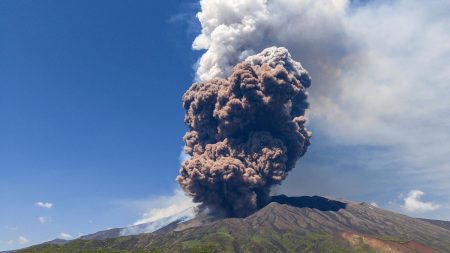The Unseen Challenges of Night Flight: Lessons from the Potomac River Tragedy
The tragic collision between an American Airlines flight and a US Army Black Hawk helicopter over the Potomac River serves as a stark reminder of the inherent complexities and heightened risks associated with nighttime aviation. While the aviation industry has made significant strides in safety, achieving remarkably low accident rates, the darkness introduces a layer of difficulty that demands unwavering vigilance and specialized training. Captain Chesley "Sully" Sullenberger, renowned for his miraculous Hudson River landing, emphasizes this point, stating that "everything is harder at night." His insights shed light on the unique challenges faced by pilots navigating the nocturnal skies and underscore the importance of continuous learning and adaptation in the face of evolving aviation landscapes.
Sullenberger’s observation that aviation has become "exceptionally safe" is supported by statistical data. However, he cautions against complacency, noting that the industry’s progress has often been tragically punctuated by accidents that force critical reevaluations and improvements. The Potomac River incident, though still under investigation, serves as a contemporary example of the need to learn from such events, extracting valuable lessons to further enhance safety protocols and mitigate future risks. While the specific cause of the collision remains undetermined, Sullenberger highlights the inherent difficulties of nighttime flight, particularly the reduced visibility and the reliance on aircraft lighting for situational awareness.
The limitations of nighttime visibility pose a significant challenge for pilots. Unlike daytime operations where aircraft are readily discernible by their physical characteristics, pilots flying at night must rely primarily on the position and movement of aircraft lights to judge their distance, altitude, and trajectory. This reliance on often ambiguous visual cues increases the cognitive workload for pilots, requiring them to process information quickly and accurately in an environment with reduced sensory input. The presence of ground lights, as speculated by Sullenberger in relation to the Potomac incident, can further complicate matters, potentially creating visual clutter and making it more difficult to distinguish aircraft lights against the backdrop of urban illumination.
The challenges of night flight are further compounded by the unique characteristics of certain airports, such as Ronald Reagan Washington National Airport, where the collision occurred. Its shorter runways and complex traffic patterns, a legacy of its 1930s origins, demand specialized training and heightened awareness from pilots. While technological advancements have improved navigation and safety systems at the airport, the fundamental layout and operational constraints present ongoing challenges. Sullenberger’s assessment of Reagan National underscores the importance of airport-specific training, ensuring that pilots are adequately prepared for the specific demands of operating in complex environments, particularly during nighttime hours.
The ongoing investigation into the Potomac River tragedy will undoubtedly reveal more specific details about the circumstances leading to the collision. However, Sullenberger’s commentary provides a valuable perspective on the broader challenges of night flight and the importance of maintaining vigilance in the face of reduced visibility and complex operating environments. The recovery efforts, involving the painstaking retrieval of bodies and debris from the icy waters, serve as a somber reminder of the human cost of aviation accidents. The analysis of the recovered black boxes, containing cockpit voice recordings and flight data, will provide crucial insights into the final moments of the flight and contribute to a more comprehensive understanding of the factors that contributed to the tragedy.
This incident highlights the multifaceted nature of aviation safety, encompassing not only technological advancements and regulatory frameworks but also the human element. The training, experience, and decision-making of pilots play a crucial role in maintaining safe operations, particularly during challenging conditions like nighttime flight. As the investigation progresses, the lessons learned from the Potomac River tragedy will undoubtedly inform future safety enhancements, contributing to the ongoing evolution of aviation safety protocols and minimizing the risks inherent in navigating the complex and ever-changing skies. The ultimate goal remains the prevention of future tragedies and the continuous improvement of aviation safety for all.










